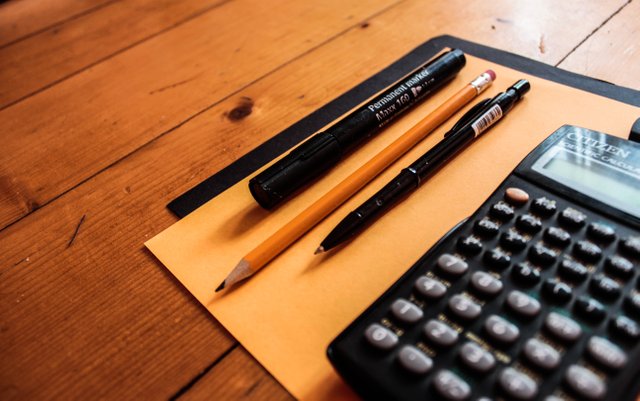[0228] Crypto Tips: Understanding "Dollar Cost Averaging"

Like many of you, cryptocurrency was the first real investment I ever made. I've toyed around with money before, sure, but never bought stocks, ( junk ) bonds or anything like that. Crypto is the first asset class I've entered into in a serious way and so many of the skills to do with investing I've had to learn myself.
And as you know, there's a lot to learn. And there are a lot of ( overly ) complicated topics to understand if you want to seriously trade digital blips.
Dollar Cost Averaging
One term I kept hearing during this bear market was "dollar cost averaging". It was generally used when coins are falling in price and the advice is "buy on the way down to lower your buying cost".
Which is confusing because if a coin you have bought is falling in price, how does buying more on the way down decrease what you spent on it?
The key is that you are buying more of a crypto for the same amount of money.
Let me explain.
Let's imagine you bought a crypto for $1. And you bought just one of them. That means your dollar cost average or the average price you paid for it is $1. Right? You bought one crypto for $1.
Let's imagine that the same coin falls by 50% a week later ( as usually happens ) and is now worth 50c. Assuming that this is a good crypto project and is likely to rise again in future, let's say that you spend another $1 and buy more of the same coin.
- Your first trade of $1 bought you one coin.
- Your 2nd trade of $1 bought you... two coins at 50c each.
- You spent $2 and now have 3 coins. One at $1. Two at 50c.
So your dollar cost average for all three coins is $2 / 3 coins = .66c each. Or, 3 coins x .66c = $2, which is what you spent.
By accounting for your crypto and dollar cost averaging to find the amount you paid, that means the coin only needs to rise to .66c before you are in profit. It doesn't have to go back to $1 because you paid for 2 coins at 50c each, which reduces your cost to somewhere between $1 and 50c.
66c in this case. So 66c is where the coin becomes profitable.
Compond Effect of Dollar Cost Averaging
Okay, let's imagine that the same coin falls to 10c and loses 90% of it's value because it's a bear market. As I said, it's a good coin and will probably rise again, so you want to buy more at the even cheaper price.
So you go ahead and spend another $1 and buy some more coins.
Let's look at your portfolio.
- Your first trade of $1 bought you 1 coin.
- Your 2nd trade of $1 bought you... 2 coins at 50c each due to a 50% correction in the market.
- Your 3rd trade of $1 bought you... *10 coins" at 10c each due to the 90% correction of the bear market.
So what is your dollar cost average now?
It's easy to work out. You divide the $3 total that you spent by the 13 coins you have.
$3 / 13 = .23c
Your dollar cost average of your 13 coins is just 23C! That means, your coin only needs to rise above 23c to be profitable.
One Last Thing
I hope I've broken down the concept of dollar cost averaging ( and why you would do it, other than to "buy cheap coins" ) so you can understand it.
As you know, the lower the price falls, the more coins you get for the same amount of money. Theoretically then, if you have chosen the right coin, your portfolio can explode in value. This is the real reason why you "buy the dips" and secure more coins..
One thing to note. In the example above, if the coin rises to $1 and achieves it's original price, you will actually have made a 434.7% increase on your overall 23c investment per coin. Which is not too shabby.
Even though your first trade cost you a dollar, because you dollar cost averaged and bought 2 coins @50c and another 10 @10c, it drastically lowered the price where you begin to see profit.
The Moral of the Story?
Pay attention to the dollar cost average of your crypto as it gives you an accurate account of how you are performing.
Thanks for watching,
Brendan Rohan - Indie developer of 'next gen' natural medicine from Melbourne, Australia
Www.Skyflowers.co ( see "botany" tab for the plant research )
Www.ClinicalFlowerTherapy.com
Social @iSkyflowers
YouTube Skyflowers.Tv
If you support natural medicine and an independent research project that began in 1997, then steem me. The creds I get will help me provide a solid body of information that future generations can build upon.
DISCLAIMER: This article and all information on this channel & all content is offered purely for educational & entertainment purposes. Always do your own research when investing money and seek the help of a registered financial advisor.
Thanks for talking through dollar cost averaging. As a beginning strategy, it's always a good go-to. Have you ever looked at value cost averaging?
Interesting concept. I will do some homework on the numbers. As for my mate, it would make his head explode. He's only just bought his first Bitcoin!
No, never come across the term to be honest. Will Google it.
This post was for a friend who asked me about it.